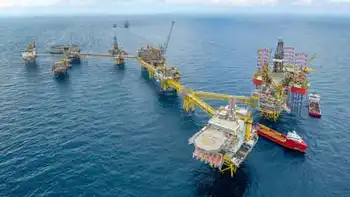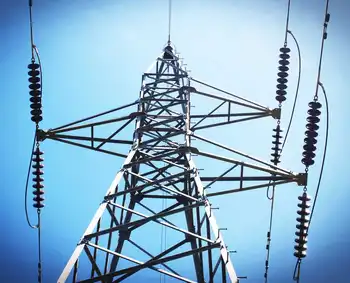New York State to investigate sites for offshore wind projects

Arc Flash Training CSA Z462 - Electrical Safety Essentials
Our customized live online or in‑person group training can be delivered to your staff at your location.

- Live Online
- 6 hours Instructor-led
- Group Training Available
NYSERDA Offshore Wind Data initiative funds geophysical and geotechnical surveys, seabed and soil studies on New York's shelf to accelerate siting, optimize foundation design, reduce costs, and advance clean energy deployment.
Key Points
State funding to support surveys and soil studies guiding offshore wind siting, design, and cost reduction.
✅ Up to $5.5M for geophysical and geotechnical data collection
✅ Focus on seabed soils, shelf geology, and foundation design inputs
✅ Accelerates siting, reduces risk, and lowers offshore wind costs
The New York State Energy Research and Development Authority (NYSERDA) is investing up to $5.5 million for the collection of geophysical and geotechnical data to determine future offshore wind development sites.
The funding is to look at seabed soil and geological data for the preliminary design and installation requirements for future offshore wind projects. Its part of N.Y. Gov. Andrew Cuomos plan to develop 9,000 megawatts of offshore wind energy by 2035.
Todays announcement is another step in Governor Cuomos steadfast march to achieving 9,000 megawatts of offshore wind by 2035, putting New York in a clear national leadership position when it comes to advancing this new industry through large-scale energy projects across the state. The surveys NYSERDA will be funding under this solicitation will expand the offshore wind industrys access to geophysical and geotechnical data that will provide the foundation for future offshore wind development in these areas, and accelerate project development while driving down costs, NYSERDA President and CEO Alicia Barton said.
NYSERDA will select one or more contractors to do the investigations, while recent DOE wind energy awards support complementary research, and develop a model for describing geophysical and geotechnical conditions. NYSERDA will also select a contractor to support project management and host the data that is collected. The submission deadline is Jan. 21, 2020.
Todays announcement builds on the data collected in a Geotechnical and Geophysical Desktop Study also released today, which includes information on the middle continental shelf off the shore of New York and New Jersey, where BOEM lease requests are shaping activity, creating a regional overview of the seafloor and sub-seafloor environment as it relates to offshore wind development.
Strong knowledge of environmental conditions and factors, including seabed soil conditions, are essential for the installation of offshore projects, such as Long Island proposals, but only a limited amount of soil sampling and testing has been undertaken to date.
The collection of geophysical and geotechnical data from areas off of New Yorks Atlantic coast is yet another demonstration of New Yorks leadership promoting the responsible development of offshore wind. The data generated by this initiative will ultimately lead to better projects, lower cost, and enhanced safety. New York is leading the way to a clean energy future, as the state finalizes renewable project contracts that expand capacity, and relying on data collection and sound science to get us there, New York Offshore Wind Alliance Director Joe Martens said.











